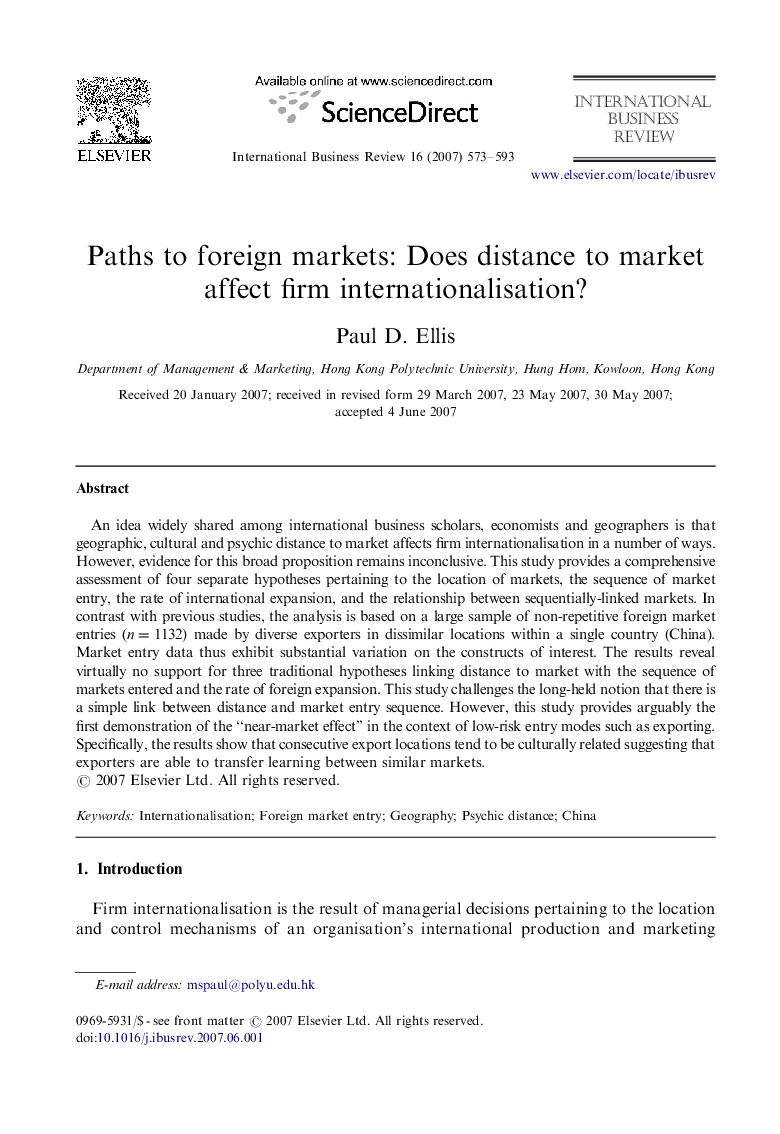| Article ID | Journal | Published Year | Pages | File Type |
|---|---|---|---|---|
| 1002018 | International Business Review | 2007 | 21 Pages |
An idea widely shared among international business scholars, economists and geographers is that geographic, cultural and psychic distance to market affects firm internationalisation in a number of ways. However, evidence for this broad proposition remains inconclusive. This study provides a comprehensive assessment of four separate hypotheses pertaining to the location of markets, the sequence of market entry, the rate of international expansion, and the relationship between sequentially-linked markets. In contrast with previous studies, the analysis is based on a large sample of non-repetitive foreign market entries (n=1132) made by diverse exporters in dissimilar locations within a single country (China). Market entry data thus exhibit substantial variation on the constructs of interest. The results reveal virtually no support for three traditional hypotheses linking distance to market with the sequence of markets entered and the rate of foreign expansion. This study challenges the long-held notion that there is a simple link between distance and market entry sequence. However, this study provides arguably the first demonstration of the “near-market effect” in the context of low-risk entry modes such as exporting. Specifically, the results show that consecutive export locations tend to be culturally related suggesting that exporters are able to transfer learning between similar markets.
